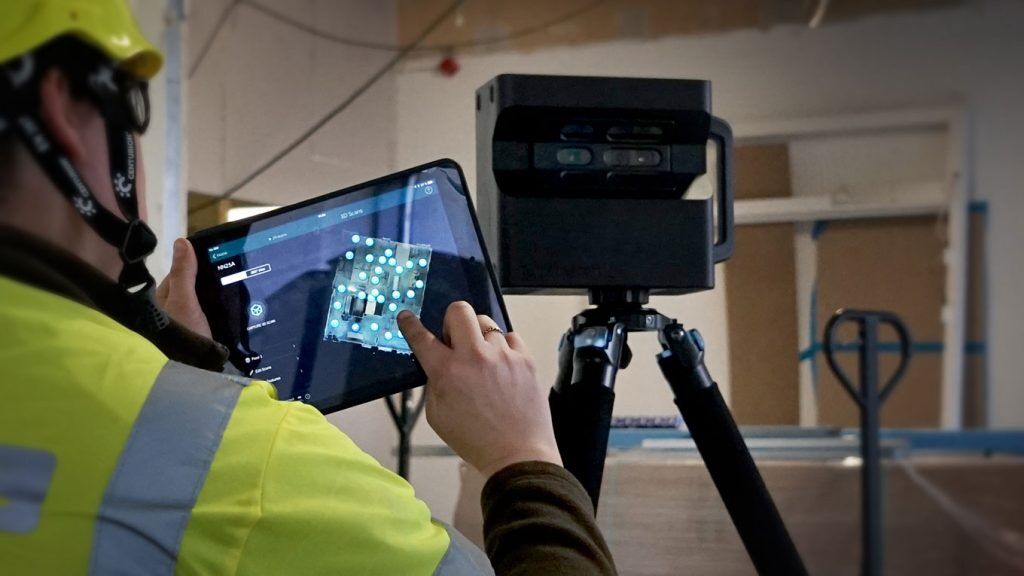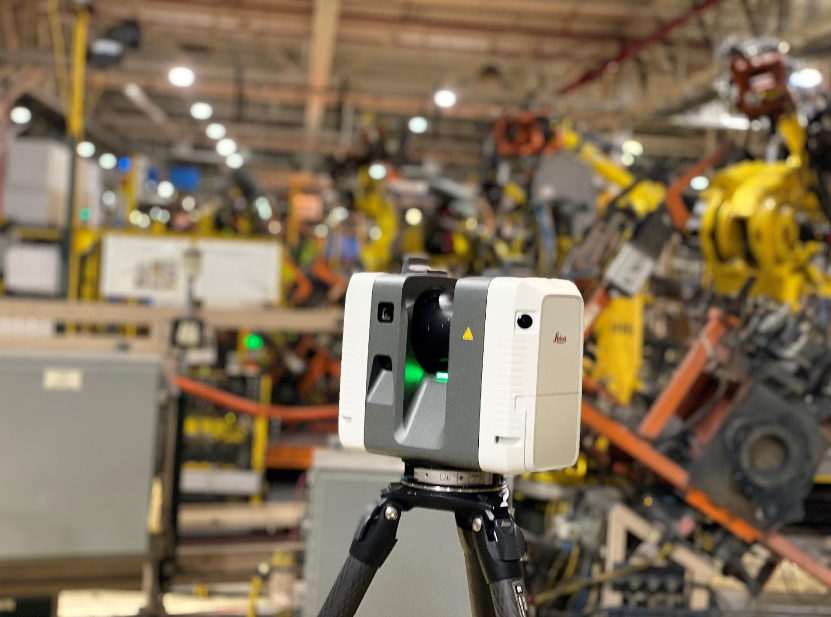How 3D Scanning Streamlines the Preconstruction Phase
Enhancing Manufacturing Processes: The Influence of 3D Laser Scanning on Quality Assurance
3D laser scanning modern technology is transforming quality assurance in production. By supplying exact measurements and high-resolution data, it enables manufacturers to determine discrepancies from specs easily. This innovation not just improves examination procedures yet likewise boosts functional performance. 3D Scanning. The execution of this innovation comes with its own set of obstacles. Discovering these facets discloses the broader implications for industries and the future landscape of manufacturing

Recognizing 3D Laser Scanning Technology
Although 3D laser scanning modern technology has progressed substantially recently, its essential concept remains uncomplicated: recording the accurate geometry of things making use of laser beams. This modern technology utilizes laser light to measure ranges in between the scanner and numerous factors on a things's surface area. The information collected is after that processed to develop an in-depth 3D design, precisely mirroring the dimensions and contours of the checked item.
Typically, 3D laser scanners can be classified right into two primary kinds: get in touch with and non-contact scanners. Get in touch with scanners literally touch the things to collect measurements, whereas non-contact scanners make use of laser beam of lights to record data from a range. The convenience of this modern technology enables its application throughout various sectors, consisting of manufacturing, design, and building and construction. Its capacity to generate high-resolution models promotes high quality control, reverse engineering, and rapid prototyping, ultimately improving design precision and efficiency in manufacturing processes.
Advantages of 3D Laser Scanning in Manufacturing
As manufacturers seek to boost efficiency and precision in their processes, the advantages of 3D laser scanning have come to be significantly apparent. This cutting-edge technology enables quick and very exact dimensions of complex geometries, substantially minimizing the moment needed for quality checks. By catching comprehensive data, suppliers can recognize discrepancies early in the production procedure, consequently lessening waste and rework prices.
3D laser scanning helps with better design recognition, enabling engineers to contrast as-built problems with original specifications. This capacity ensures that any kind of discrepancies are quickly addressed, improving overall product high quality. On top of that, the modern technology sustains the production of electronic twins, which can be made use of for simulations and procedure optimizations. Therefore, manufacturers not just raise their functional efficiency but likewise boost their competitive advantage out there. On the whole, the assimilation of 3D laser scanning represents a transformative action toward achieving greater criteria in producing quality assurance.
Combination of 3D Laser Scanning Into High Quality Control
Integrating 3D laser scanning into quality assurance procedures enhances the precision and performance of examinations throughout manufacturing. This modern technology makes it possible for producers to catch in-depth, high-resolution data of components and assemblies, enabling specific dimensions and comparisons versus layout specifications. By employing 3D laser scanning, companies can identify variances from resistances better, which is important for preserving item stability.

Real-World Applications and Study
Real-world applications of 3D laser scanning in manufacturing show its transformative effect throughout different sectors. For example, aerospace business use this innovation to conduct accurate inspections of components, ensuring they fulfill rigid safety criteria. A notable instance entailed a leading aircraft supplier that used 3D laser scanning to simplify its top quality control processes, significantly minimizing assessment times and mistakes.
In the automobile field, suppliers have actually applied laser scanning to produce electronic twins of their lorries, making it possible for real-time changes throughout manufacturing. One automobile company reported a 30% decrease in rework costs after integrating this modern technology into their production line.
Furthermore, in the consumer goods industry, firms are making use of 3D laser scanning for quick prototyping, enabling quicker models and enhanced product styles. These applications illustrate exactly how 3D laser scanning not just boosts accuracy yet also enhances effectiveness and development throughout multiple production domains.
Getting Rid Of Challenges in Application
Carrying out 3D laser scanning in making presents several challenges that companies should browse to fully understand its benefits. One considerable difficulty is the first expense of devices and software application, which can hinder firms from adopting this modern technology. Additionally, incorporating you can find out more 3D laser scanning right into existing process calls for overcoming resistance to change amongst staff members, requiring detailed training programs to guarantee proficiency. Data administration likewise poses a challenge, as the high volume of information produced by 3D scanning have to be properly refined and assessed to obtain workable insights. In addition, compatibility problems with heritage systems might hinder seamless combination, demanding possible upgrades or modifications. Attending to these challenges is important for suppliers aiming to enhance high quality control and maximize manufacturing processes. By developing clear methods for training, financial investment, and data management, firms can mitigate these obstacles and launch the transformative possibility of 3D laser scanning in their operations.
Future Trends in 3D Laser Scanning for Production
As producing proceeds to progress, the integration of 3D laser scanning with increased automation is expected to transform production procedures. Enhanced data analytics will certainly play a vital duty in improving and enhancing process high quality control. These fads highlight the capacity for higher efficiency and precision in producing settings.

Enhanced Automation Integration
The combination of automation in manufacturing has actually been steady, the future of 3D laser scanning is positioned to increase this pattern substantially. As manufacturing processes become progressively complex, the need for exact, real-time measurements grows. 3D laser scanning technology provides automated information capture, minimizing labor costs and reducing human mistake. This combination allows suppliers to enhance top quality control procedures, making it possible for rapid discovery of variances in production. Furthermore, the placement of 3D laser scanning with robotics and automated systems promotes seamless procedures, enhancing general effectiveness. As producers adopt these innovative innovations, they can expect enhanced precision and productivity, placing see this themselves competitively in a swiftly developing market. The harmony between automation and 3D laser scanning marks a considerable jump onward in manufacturing technology.
Boosted Data Analytics
The integration of automation has actually led the way for developments in information analytics within the domain name of 3D laser scanning. Manufacturers are increasingly leveraging innovative formulas and artificial intelligence techniques to examine substantial datasets produced by laser scans. This improved data analytics capacity enables real-time tracking of making procedures, making it possible for the identification of deviations and issues better than traditional methods. Anticipating analytics can anticipate prospective concerns, greatly decreasing downtime and enhancing overall performance. The capacity to envision information in 3 measurements supplies deeper insights right into manufacturing operations, cultivating far better decision-making. As 3D laser scanning innovation proceeds to develop, the duty of information analytics will end up being increasingly essential in driving innovation and preserving affordable benefit in manufacturing.
Often Asked Concerns
What Industries Advantage one of the most From 3D Laser Scanning?
The markets that benefit most from 3D laser scanning include production, building, aerospace, automotive, and healthcare. These fields use the technology for precision dimensions, quality control, and efficient design processes, considerably improving overall operational performance.
How Does 3D Laser Scanning Contrast to Conventional Dimension Methods?
3D laser scanning uses higher precision and speed compared to typical dimension approaches. It records in-depth geometries rapidly, lowering human mistake and facilitating far better evaluation, which eventually enhances total quality control in various markets.
What Is the Cost of Executing 3D Laser Scanning Modern Technology?
The expense of implementing 3D laser scanning innovation differs substantially, normally ranging from $10,000 to $100,000, depending upon tools, training, and software program. Organizations has to consider these expenditures against potential effectiveness and high quality enhancements.
Are There Certain Software Program Demands for 3D Laser Scanning?
Yes, 3D laser scanning calls for particular software program, including information processing and modeling applications. Typical choices include CAD software, point cloud handling tools, and specialized applications that assist in the integration and analysis of scanned data for ideal outcomes.
How Long Does a Normal 3D Laser Scanning Refine Take?
A typical 3D laser scanning procedure can take anywhere from a few mins to several hours, depending on elements like the dimension of the object, complexity of the setting, and required level of information for precision.
3D laser scanning technology is changing high quality control in production. 3D laser scanning technology has advanced significantly in recent years, its fundamental principle stays uncomplicated: recording the accurate geometry of things using laser light beams. Integrating Visit Your URL 3D laser scanning into top quality control procedures enhances the precision and efficiency of examinations throughout production (3D Scanning). 3D laser scanning modern technology uses automated information capture, minimizing labor expenses and lessening human mistake. The cost of implementing 3D laser scanning innovation differs significantly, commonly ranging from $10,000 to $100,000, depending on equipment, software, and training